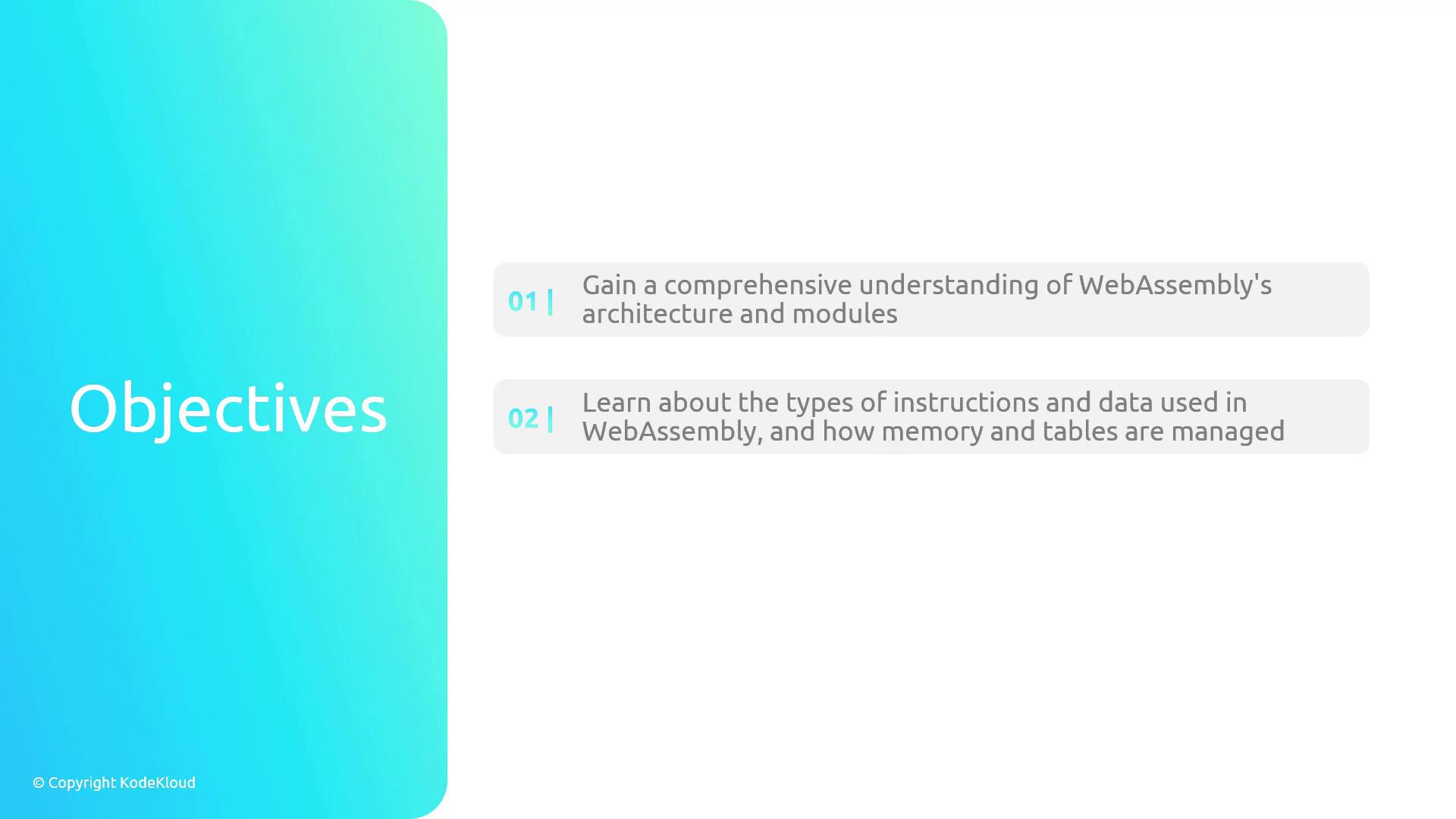Exploring WebAssembly (WASM)
WebAssembly Core Concepts
Section Summary
In this lesson, you’ll gain a deep understanding of WebAssembly (Wasm) and its execution model. We start by examining Wasm’s design principles and runtime architecture, then dive into the structure and lifecycle of Wasm modules. From there, we break down the core building blocks:
| Component | Purpose |
|---|---|
| Instructions | Low-level operations for arithmetic, control flow, and memory access |
| Data Types | Native types (i32, i64, f32, f64) and reference types |
| Memory | Linear memory model, allocation strategies, and security limits |
| Tables | Function tables used for imports, exports, and indirect calls |
Note
For an in-depth reference, consult the WebAssembly Core Specification.

After covering these components, we survey the WebAssembly ecosystem—toolchains, runtimes, debuggers, and popular libraries. A short quiz at the end will reinforce your learning and ensure you can:
- Describe the Wasm execution model and module structure
- Identify and use core Wasm instructions and data types
- Manage linear memory and function tables
- Navigate key tools and resources in the Wasm ecosystem
Links and References
Watch Video
Watch video content